The battleship Texas was handed over to the State of Texas in 1948 (instead of going to Bikini like most of her contemporaries) and has been a museum ever since. Unfortunately, the state of the art in warship preservation back then wasn't particularly good, and she's been in bad shape for a long, long time. In 2019, the Texas State Legislature finally passed a $35 million funding round for the preservation of the ship, and turned her over to a nonprofit tasked with her long-term preservation. That would involve drydocking her to remove corroded structure, most notably the torpedo blisters added in 1925. Oh, and they run tours of the drydock for the sort of massive nerds who find that kind of thing interesting. So of course Lord Nelson and I decided to go to Galveston and see.
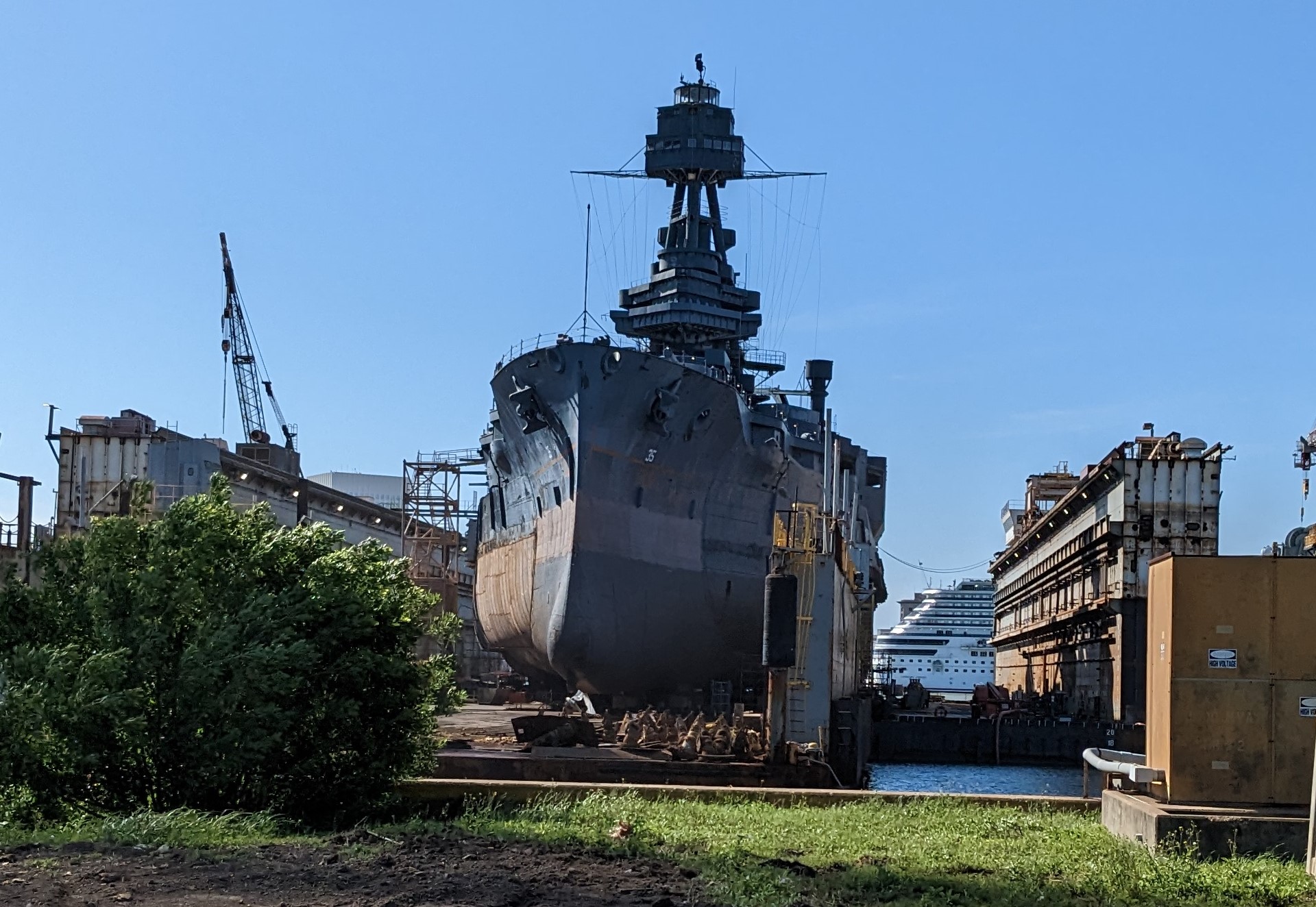
It was very cool. We showed up at the entrance to Gulf Copper, where some of the ship's company waited for us. After a safety briefing and the issue of hard hats, we were taken into the yard, where the drydock was tied up. Texas was far from my first battleship, but she was the first out of the water, and it was cool to see her entirely out of the water. She first went into dock back in August, so most of the structure has already been removed on both sides of the ship, and the majority of the new starboard blister is in place. But we still got a good overview of the work, and the chance to see a bit of the battleship that very few people get to see.
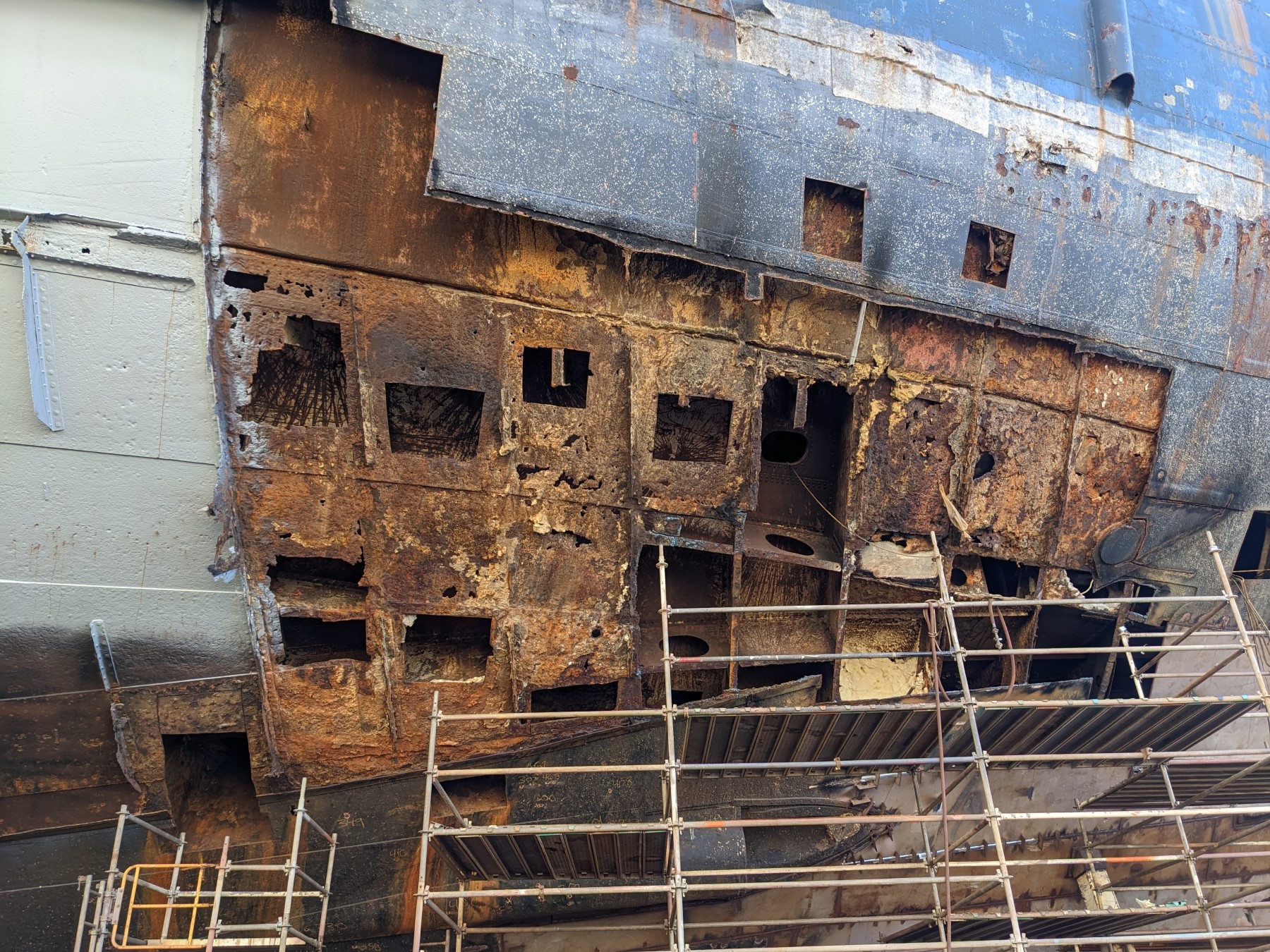
Yet-to-be-repaired damage on Texas, with some foam visible
The basic problem Texas had was that the plan in 1948 was to fill her bottom with brackish water from the Houston Ship Channel and drive her into the mud. This is not considered best practice today, and over time, she has essentially rusted from the inside out. She was drydocked in 1988/89, but that was essentially an emergency repair, and problems continued to mount over the years. When I was on Iowa, it was an open secret that they weren't sure they could save her. A comment I heard secondhand was "we knew it was going to be a bad day, because we had water somewhere we didn't normally have water".1 A 2007 bond issue had raised $25 million to dry-berth the ship, but it was all spent reinforcing structure (the repairs to the aft structure, which was 80% gone, while she was afloat, are an impressive feat of naval engineering that I hope to learn more about some day) and making emergency repairs. The blisters were the biggest problem because they had been deliberately built out of thin (.25") steel to avoid producing fragments after a torpedo hit, and had leaked quite badly even when they were new. By the time the authorization to move her came through, she was leaking at around 2000 gal/min. Repairs with foam and concrete patches eventually brought this down to only 20 gal/min, allowing her to be brought safely to Galveston.
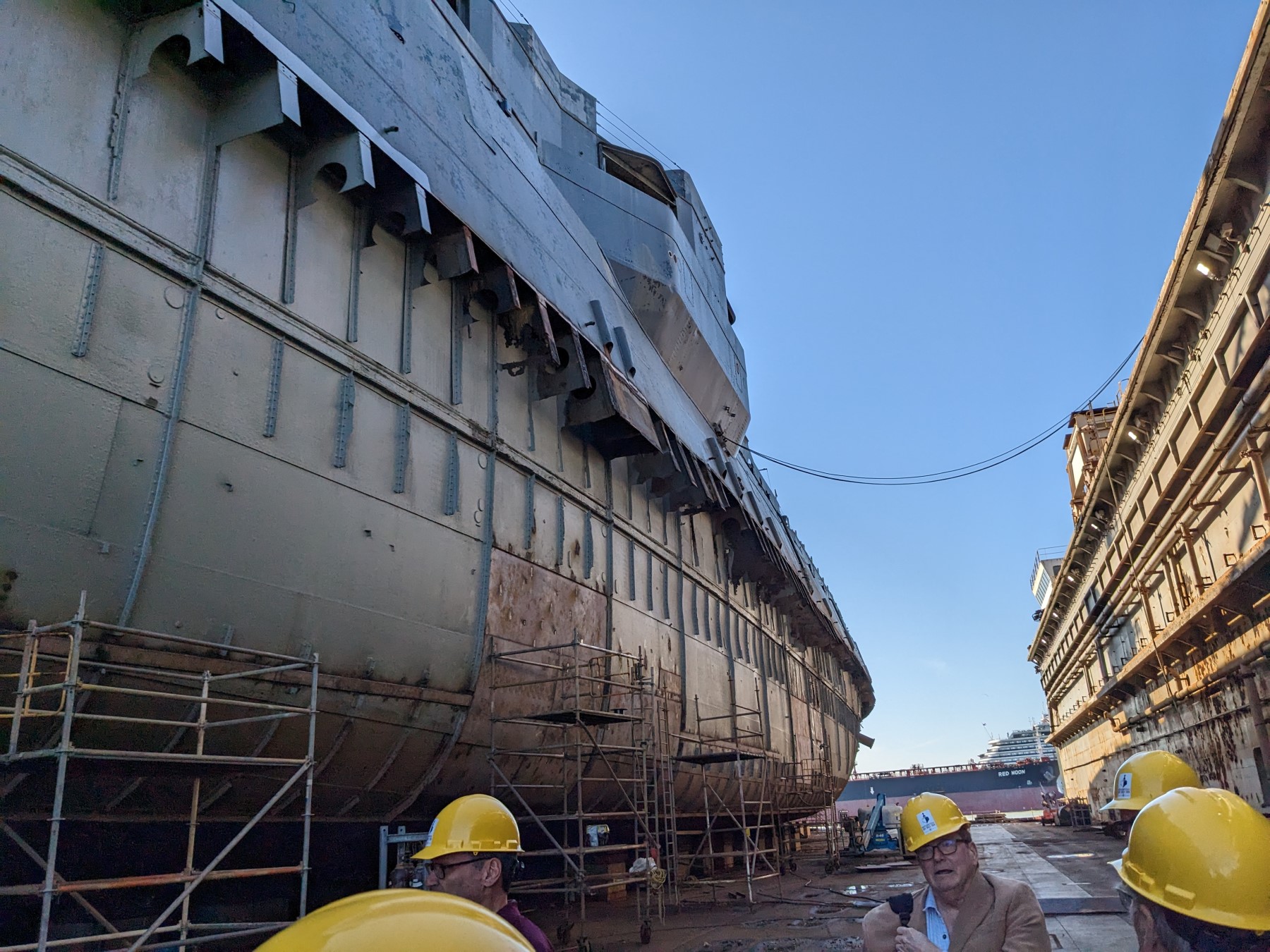
The port side, showing the original hull lines
The basic plan is to clean out all of the temporary repairs, many of which will cause serious problems long term, and remove the blisters, which are corroded beyond repair, replace some of the aft plating, which has been particularly troublesome over the years, and check for any leaks or thin spots in the hull, then install new, heavier blisters. There's apparently some people on social media asking why they're bothering, but our guide pointed out that the blisters add about 3' of buoyancy, and the ship cleared the docking blocks by 2' on the way in. There's also historical preservation reasons for the replacement, to keep her reasonably close to her configuration at the end of her service life. It's not a perfect replacement, as the new blisters have flat bottoms just above the turn of the bilge, instead of narrowing lower in the ship. This is to make it easier to clean them out, as it was almost impossible to remove all sediment from the bottom of the old blisters. Except for the forward section, where the shape is quite complex, the new blisters are being fabricated as modules and hung in the dock. The first module didn't fit very well, but recently they've been putting up about a module a week.
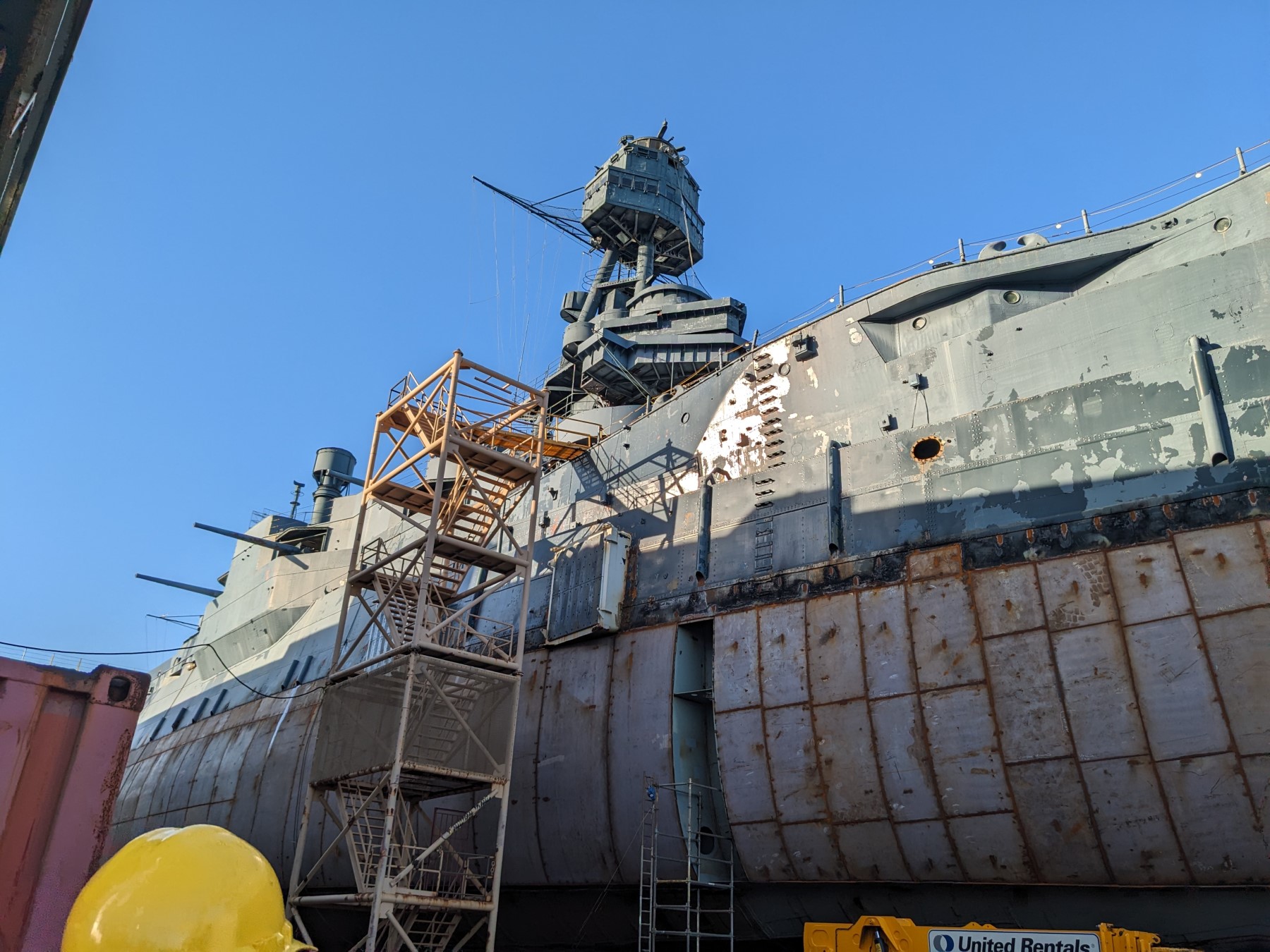
The starboard side, with new blister mostly installed
Now, everything discussed above can also be found in the Battleship Texas YouTube channel, which has videos discussing the progress of the refit, and if that's all you're interested in, I would recommend just watching those. I didn't learn a whole lot that I hadn't already heard about from them. The only exception was the story of the drydock Texas is currently in. Until fairly recently, the dock was in the Bahamas, but the operators attempted to lift a ship that was twice the dock's rated capacity and it broke in half. They were going to scrap it, but a deal was made, and Gulf Copper bought half of it and towed it to Galveston, where Texas became the first ship to use it in the new configuration.
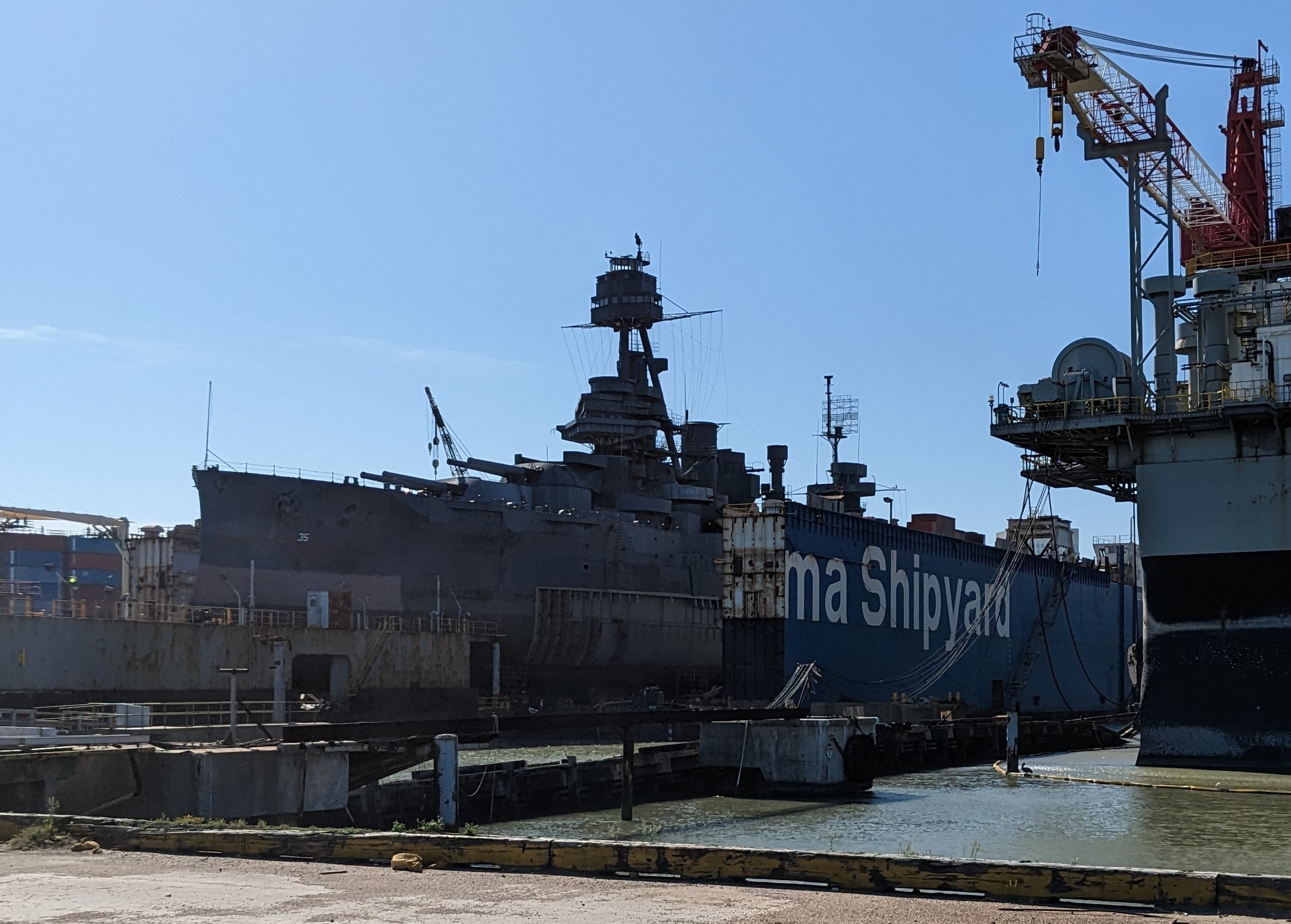
Texas in half a drydock
But at the same time, it was very cool to see the ship in drydock in person. I've long been interested in the drydocking process, and wrote it up here. We were able to get right up to the ship's side, and even touch the docking blocks, and the teak-filled auxiliary keels that were installed specifically to support the ship while she was in dock. The wood was in remarkably good condition, as was most of the hull, despite the ravages of the past 75 years. We were often able to peer up inside the ship and view the work going on. I had a great time, and look forward to seeing Texas back in her rightful role as a museum.
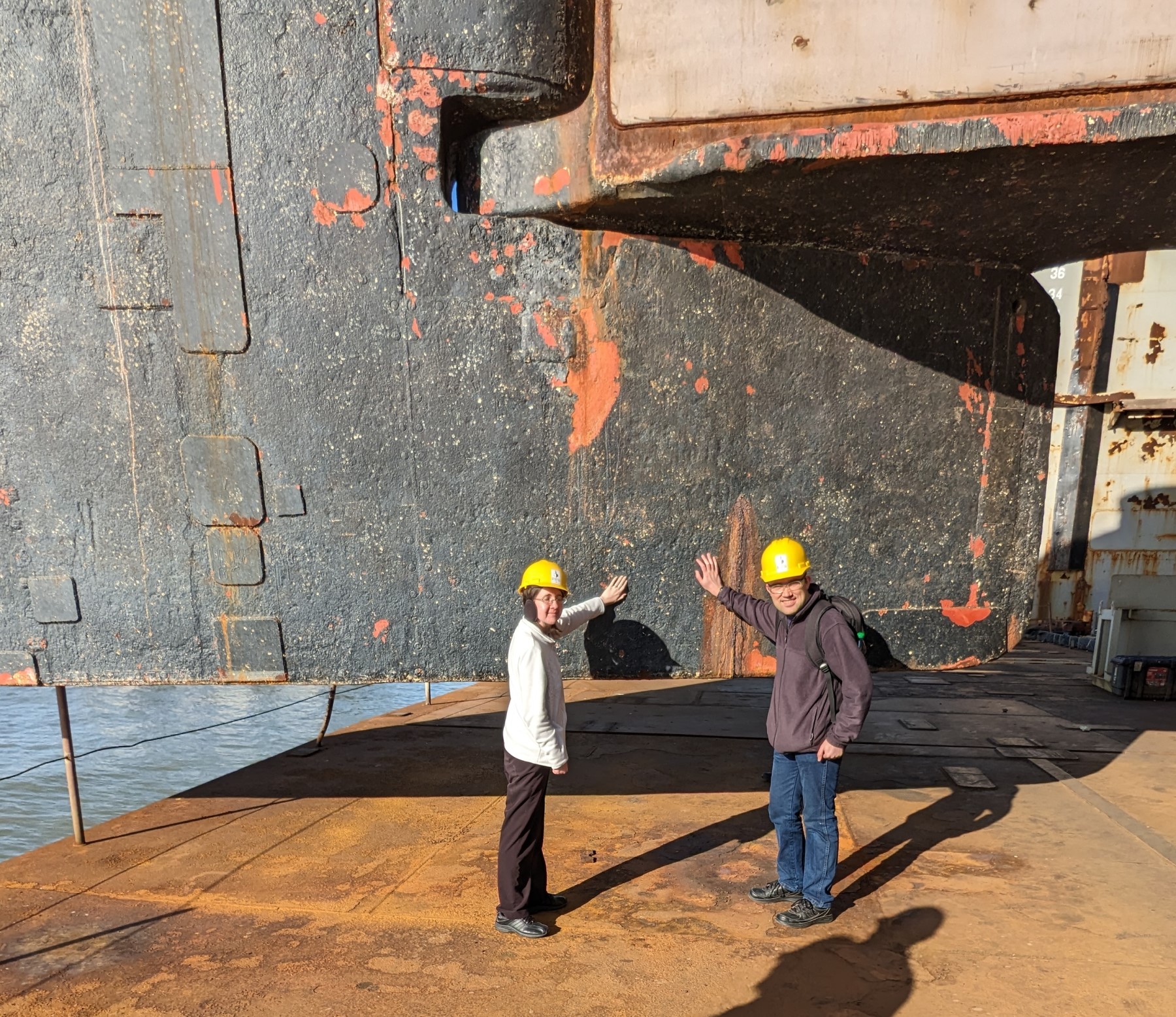
Lord Nelson and me with the rudder
At the time, it wasn't clear where Texas was going to end up, but the eventual winner was Galveston, which makes a lot of sense. It's a touristy town, and should ensure enough traffic to keep her in good shape financially. The best information I have is that she won't be open again until 2025, and I will try to pay her a visit when she reopens.
1 Technically, this is true of all museum ships, but "places we don't normally have water" is basically "inside the hull" for most of them. ⇑

Comments
This probibly missing a coastal.
On one hand, you are not wrong. On the other, that seems pretty obvious to me. Moving her to Dallas would take a phenomenal amount of time and money. The only museum ship I've seen seriously proposed for Dallas is the submarine of that name, or at least her forward half.
There is alway St. Anthony which is almost as big and has (slightly) better river access. : )
Neat. Wish I could find have found the time to do that!
I hadn’t given it much thought, but I assume the blisters were compartmentalized, so that a single torpedo or other damage didn’t flood hundreds of feet of blister? And was there (is there) a counterflooding setup?
Yes, the blisters were compartmentalized. I think each tank was 20-30' long, but I wasn't taking measurements. And there was a counterflooding system, which Texas famously used off Normandy to get a bit of extra range. That was one of the reasons the leaks in the blisters were such a problem, and it's been taken out.
For metal ships is marine life (barnacles, etc.) a significant concern to preservation? Or is that only a concern for wood ships?
I would assume it's only for wood ships, but maybe barnacles increase pitting or crevice type corrosion for non-obvious reasons.
Barnacles can be a problem because as they grow their shells tend to cut through the protective coatings and expose bare metal. But a decent anti-fouling coating can prevent that. And given that Texas was quite a ways inland, on the Houston ship channel, that was unlikely to be a huge problem. Fresh water is excellent at killing most forms of fouling.
They have brought the Toti (S506) from Venice to Milan, mostly along the Po River and the Navigli (canals), but the last part was a real PITA.
And it was a small pig boat, I cannot imagine would it would be dragging a nuke to Dallas!
Now one can see it at the Museo Nazionale della Scienza e della Tecnologia Leonardo da Vinci in Milan.
AIUI, the plan would probably be to move her in multiple pieces, because they're cutting the reactor off anyway, and they might as well chop the front section up a bit to make it shippable. Not sure exactly how, as Dallas isn't blessed with a surplus of navigable waterways, but you might be able to drag it up the Trinity River with enough determination.
Presumably floating 3' higher than designed would have been bad for an operational battleship, as you don't want the bottom edge of the belt above the water (exposed to shell hits)? And hence, when anti-torpedo bulges were added to an existing ship, weight was also added? Making it possibly not a coincidence that 3' on this size of ship ~ 3000 tons i.e. the treaty limit for added weight?
And presumably the counterflooding system was supposed to be something one could choose to use or not, not just an open pipe from one blister to the other? (Since it was possible to intentionally flood only one side to add the resulting list to the maximum gun elevation.) And was being a problem because the pipes and valves are more things that can leak if not (expensively) maintained?
(From the HNSA plans, the original compartments are ~18' and also have one horizontal partition.)
You are correct in all of your surmises, and our guide did explain all of this, but I didn't put it here. The big contribution was probably increased deck protection (I think Friedman says it was 140 lb of steel, but the section is a bit unclear) although there were also other changes like the revised superstructure.
And yes, the counterflooding was supposed to be controllable, but ran into issues after 75 years or so.
The way she has been preserved for much of her life is borderline criminal. I get that the state of the art in how to preserve a ship has changed a lot but even in 1945 flooding tanks with brackish water was a bad idea. Not to mention all the other wholesale flooding that was just tolerated over the years.
And even spaces that weren’t wet had largely been left to just decay. Watching Tom Scott’s videos it doesn’t seem like they were maintaining her at all.
Fortunately the new foundation seems to be a good group with a solid plan to preserve and restore the ship. It certainly seems like she is in very good hands now.